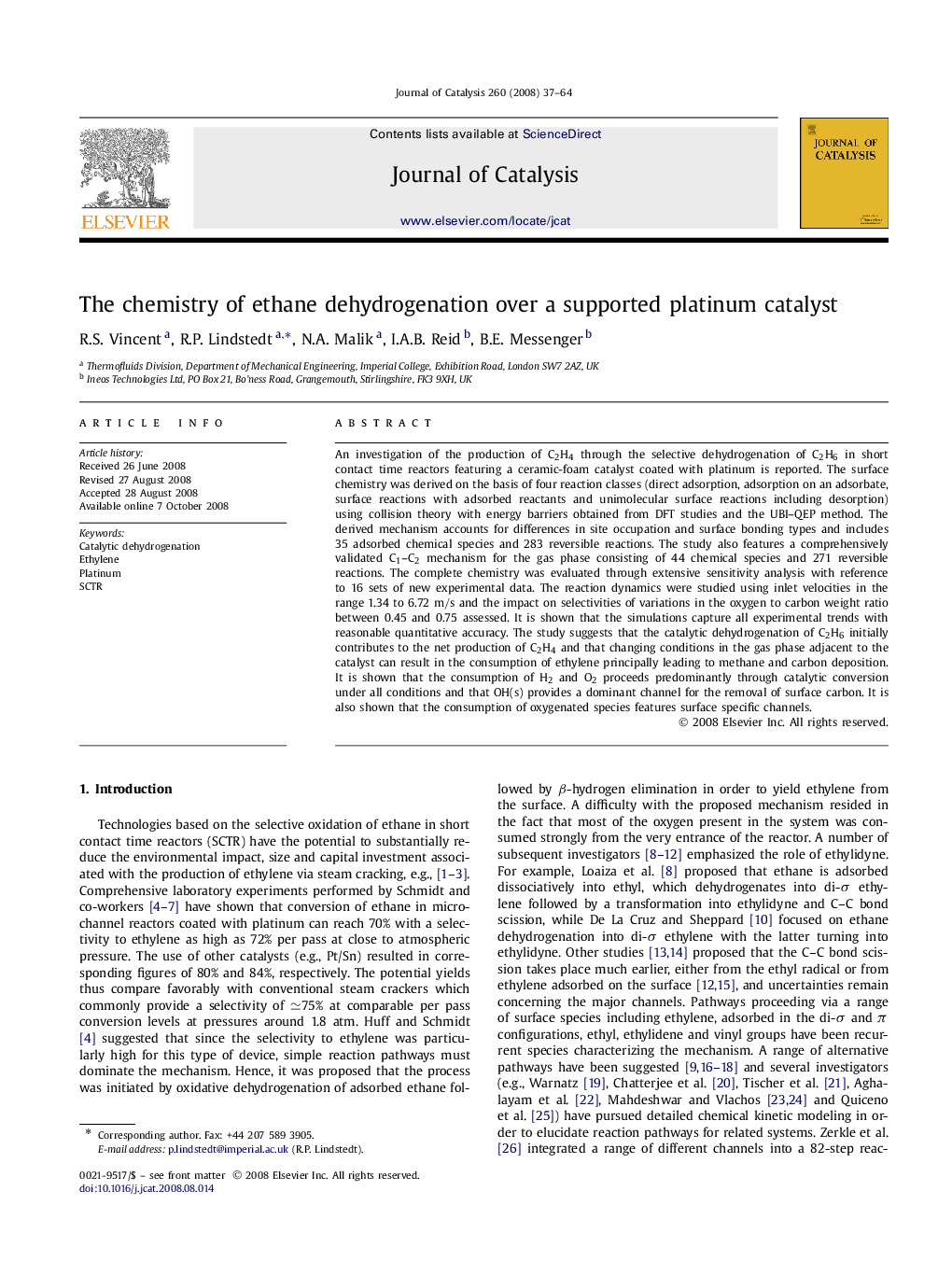| Article ID | Journal | Published Year | Pages | File Type |
|---|---|---|---|---|
| 62558 | Journal of Catalysis | 2008 | 28 Pages |
An investigation of the production of C2H4 through the selective dehydrogenation of C2H6 in short contact time reactors featuring a ceramic-foam catalyst coated with platinum is reported. The surface chemistry was derived on the basis of four reaction classes (direct adsorption, adsorption on an adsorbate, surface reactions with adsorbed reactants and unimolecular surface reactions including desorption) using collision theory with energy barriers obtained from DFT studies and the UBI–QEP method. The derived mechanism accounts for differences in site occupation and surface bonding types and includes 35 adsorbed chemical species and 283 reversible reactions. The study also features a comprehensively validated C1–C2 mechanism for the gas phase consisting of 44 chemical species and 271 reversible reactions. The complete chemistry was evaluated through extensive sensitivity analysis with reference to 16 sets of new experimental data. The reaction dynamics were studied using inlet velocities in the range 1.34 to 6.72 m/s and the impact on selectivities of variations in the oxygen to carbon weight ratio between 0.45 and 0.75 assessed. It is shown that the simulations capture all experimental trends with reasonable quantitative accuracy. The study suggests that the catalytic dehydrogenation of C2H6 initially contributes to the net production of C2H4 and that changing conditions in the gas phase adjacent to the catalyst can result in the consumption of ethylene principally leading to methane and carbon deposition. It is shown that the consumption of H2 and O2 proceeds predominantly through catalytic conversion under all conditions and that OH(s) provides a dominant channel for the removal of surface carbon. It is also shown that the consumption of oxygenated species features surface specific channels.
